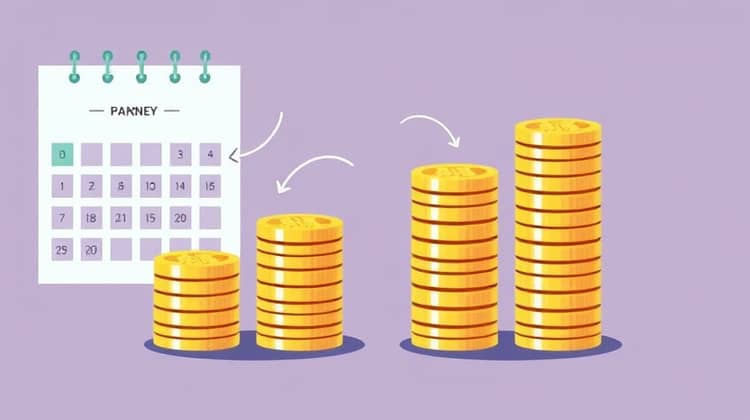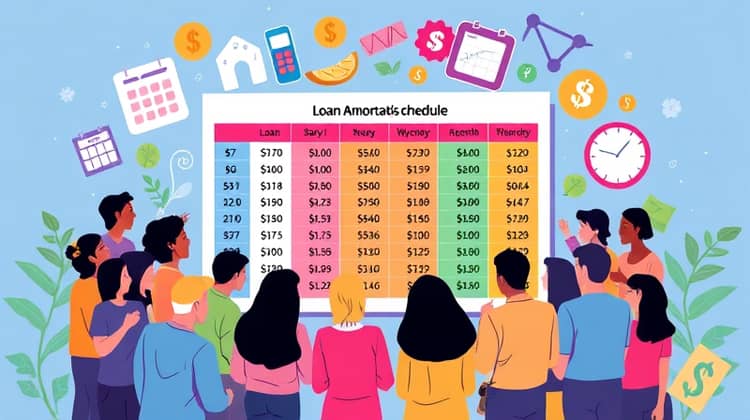As an essential component of personal finance, understanding loan amortization schedules can lead to more informed financial decisions. Whether you're a prospective homebuyer or someone looking to consolidate debt, grasping the dynamics of loan repayment is crucial. This comprehensive guide will walk you through the fundamentals of loan amortization, the creation of amortization schedules, and their relevance in various types of loans. We will also explore the advantages and disadvantages of these loans, their impact on financial health, and the importance of regularly tracking your amortization schedule.
By the end of this guide, you should feel empowered to approach loans and repayment plans with a clear understanding of how amortization works. This knowledge will not only assist you in budgeting but also in determining the best strategies for managing any debts effectively.
The Basics of Loan Amortization

Loan amortization refers to the process of progressively paying off a debt over time through regular payments. These payments consist of both principal and interest, gradually reducing the outstanding balance of the loan until it is fully repaid. Amortization schedules help borrowers visualize their repayment plan, showing how much of each payment goes toward interest versus principal repayment.
One of the key aspects of loan amortization is understanding that early payments primarily cover interest costs, with the principal fraction increasing as the loan term advances. This structure can affect total interest paid over the life of the loan, highlighting the importance of strategic repayment methods.
Creating an Amortization Schedule

To create an amortization schedule, you need to know a few key details about your loan: the loan amount, interest rate, loan term, and payment frequency. These factors determine the structure of your schedule.
- Enter the loan amount into a loan amortization calculator or spreadsheet.
- Input the annual interest rate.
- Specify the loan term (in years).
- Select the payment frequency (monthly, bi-weekly, etc.).
- Calculate your regular payment amount.
- Outline a table that shows each payment's breakdown into principal and interest along with the remaining balance.
This simple method for generating an amortization schedule ensures that you can easily monitor your repayments and stay on track towards completing your loan obligations.
Types of Amortized Loans

There are several forms of amortized loans, each serving different financial needs and preferences. Understanding the variety of loan structures can be very beneficial in choosing the right one.
Common types of amortized loans include:
- Fixed-rate mortgages
- Adjustable-rate mortgages (ARMs)
- Personal loans
- Auto loans
- Student loans
Each of these loan types has specific terms and conditions that can affect repayment strategies and overall financial health. It is advisable to research and weigh the options carefully.
How Amortization Affects Your Loan

The amortization process plays a vital role in your overall loan management strategy. As you make your monthly payments, understanding how amortization impacts your loan can help you develop effective repayment plans.
One significant area affected by amortization is the total interest you will pay over the life of the loan. Since larger portions of your initial payments go towards interest, it's crucial to factor this into your long-term financial planning.
- Amortization can impact your tax deductions (particularly for mortgages).
- Along with general budgeting, a deeper understanding can lead to smarter refinancing decisions.
- Amortization affects your borrowing capacity, influencing future financial endeavors.
- The schedule allows for better cash flow management over time.
Being aware of how amortization works can lead to better budget management and financial stability in the long run.
Pros and Cons of Amortized Loans

Amortized loans have their own set of advantages and disadvantages which every borrower should weigh before proceeding with any loan agreement. A comprehensive evaluation of these factors will guide you towards making better financial decisions.
The key pros and cons include:
- Pros: Predictable payment structure helps in financial planning.
- Cons: Interest-heavy early payments can strain early cash flow.
- Pros: Can build equity through properties over time.
- Cons: Potentially high total interest payments in long-term loans.
This balanced view of amortized loans aids borrowers in understanding whether such loans are suitable for their financial situation.
How Often Are Amortization Schedules Created?

Amortization schedules are typically created at the outset of a loan agreement. Upon signing, a lender will provide you with an initial schedule based on the agreed-upon terms.
However, as amendments occur—such as refinancing or changes in loan conditions—new schedules may need to be established to reflect updated figures.
Why Is an Amortization Schedule Important?

Having access to a detailed amortization schedule is critical for borrowers as it outlines every payment and breakdown of principal versus interest. This granularity enables better planning and management of funds throughout the loan term.
Moreover, amortization schedules can help in not only tracking but also strategizing repayment methods based on cash flow availability and future financial goals.
- It provides transparency in understanding loan repayment.
- Facilitates better budgeting and cash flow planning.
- Helps in pre-planning for larger payments toward principal if desired.
- Aids in assessing the long-term impact of interest rates on loans.
Ultimately, the importance of an amortization schedule lies in its ability to keep you informed and engaged in your financial obligations, fostering a proactive versus reactive approach to loan management.
Conclusion

In conclusion, understanding loan amortization schedules is a vital financial competency that can significantly impact your financial landscape. Mastering the knowledge surrounding loan types, payment structures, and their consequences allows for a more strategic approach to borrowing and repayment. Beyond just understanding your current obligations, it opens the door to making informed decisions about future loans, refinancing options, and investment strategies.
Whether you aim to buy a home, finance education, or manage personal loans, knowing the dynamics of amortization equips you with the tools necessary for financial empowerment.














